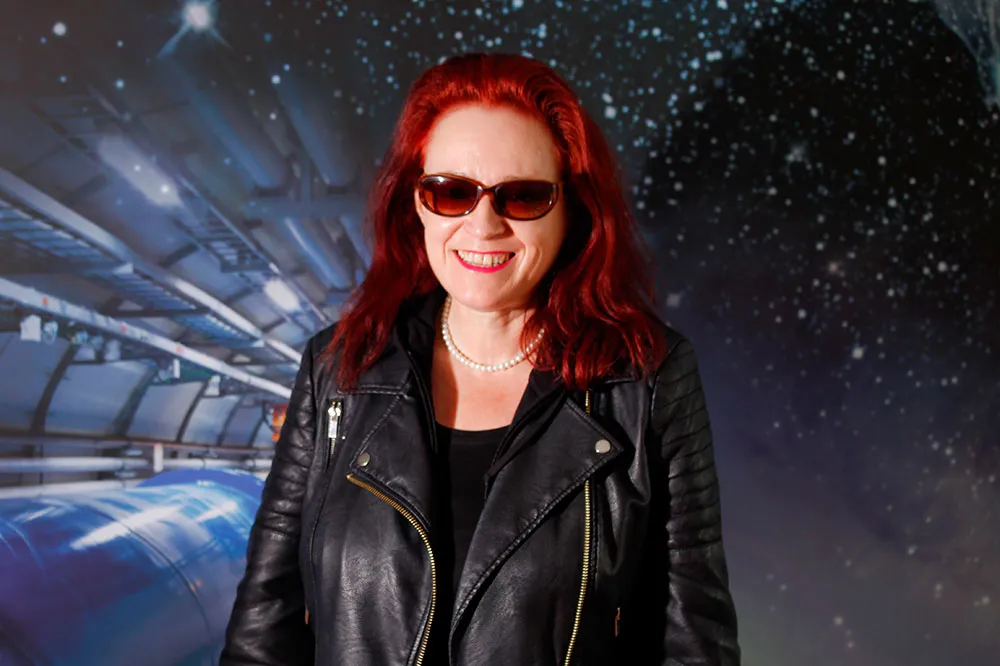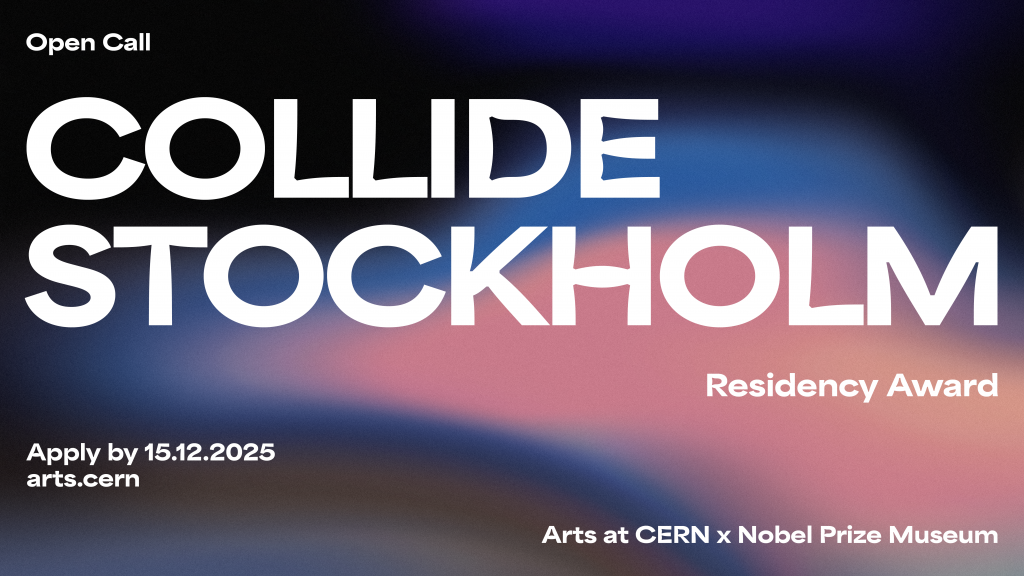- Tags
- Art commissions, Collide
- Author
- Ana Prendes

The exhibition showcases two works developed by the Collide–winning artists after their residency in the Laboratory
The exhibition To the Edge of Time reveals the stories of the key scientific discoveries behind modern cosmology, bringing together modern and contemporary works of art with scientific artefacts. The show embarks on a journey starting from two critical stages of its development—Albert Einstein’s general theory of relativity and Georges Lemaître’s formulation of an expanding universe from a Big Bang. The story continues up to the most recent research, featuring scientific contributions such as Stephen Hawking’s final theory on the origin of the universe.
Artists and scientists share a drive to explore and reveal the shadows in our understanding of the complex world that surrounds us. To the Edge of Time includes scientists’ objects showing their unique processes and ideas, alongside works on paper, sound and data installation, sculpture, experimental photography and film. Time, space, the conditions for our existence, and the nature of reality are all explored through the lenses of both scientific and artistic practices, offering new perspectives on the fabric of the universe.

At CERN, artists come with myriad ways to question nature, from theoretical models to complex experimental scenarios. British artist Suzanne Treister’s multidisciplinary work engages with eccentric narratives and unconventional bodies of research, with an ongoing focus on the relationship between new technologies, society, alternative belief systems, and humanity’s potential futures.
As the winner of the Collide Award in 2018, Treister arrived at the Laboratory with a question, ‘Is the holographic universe principle—the theory that our universe could be a vast and complex hologram—something that has been sought by artists since the beginning of our civilization?.’ In collaboration with CERN theoretical physicists, she explored this inquiry. Beyond the recognised contexts of art history, she hypothesises that artists may have intuitively been describing the holographic nature of the universe in their works.

The resulting artwork, The Holographic Universe Theory of Art History (THUTOAH), consists of a video projecting over 25,000 chronological images from art history, from cave painting to global contemporary art. The work echoes conceptually CERN’s Large Hadron Collider by accelerating 25 images per second in a looped sequence.
Accompanying the video, watercolours by CERN physicists including Wolfgang Lerche, Alessandra Gnecchi, and John Ellis provide visual interpretations of the theoretical concepts behind the holographic principle. A new soundtrack, featuring a dialogue between Stephen Hawking and cosmologist Thomas Hertog on their holographic theory of the universe, connects the scientific and artistic dimensions of the installation.

Brighton-based artists Ruth Jarman and Joe Gerhardt, known and Semiconductor, have spent over twenty years exploring the material nature of our world and how we experience it through the lenses of science and technology. During their 2015 Collide residency, they began working with raw data from particle collisions at CERN’s ATLAS detector as artistic material.
In To the Edge of Time, the artists present HALO 0.1 0.2 0.3, a series of computer graphic animations. Presented on custom-made square screens, each point of light shows where a particle of matter interacted with the detector, offering each animation of HALO 0.1 0.2 0.3 a different perspective of the data. Removed from its scientific framework, Semiconductor explore data as an artistic medium, which becomes a physical form in its own right.

The exhibition also features how scientists recreate the conditions of the Universe when it was only a tiny fraction of a second old, as achieved at CERN’s particle accelerators. Throughout the 1970s and ’80s, this everyday cooking pot was used as a vacuum chamber in the Isotope mass Separator On-Line facility (ISOLDE), which studies the properties of atomic nuclei, with further applications in fundamental studies, astrophysics, material and life sciences. ISOLDE fulfils the old alchemical dream of making new chemical elements.

The exhibition To The Edge of Time runs through 16 January 2022 at The Leuven University Library. The show is curated by physicist Dr Thomas Hertog and independent curator Hannah Redler Hawes.





